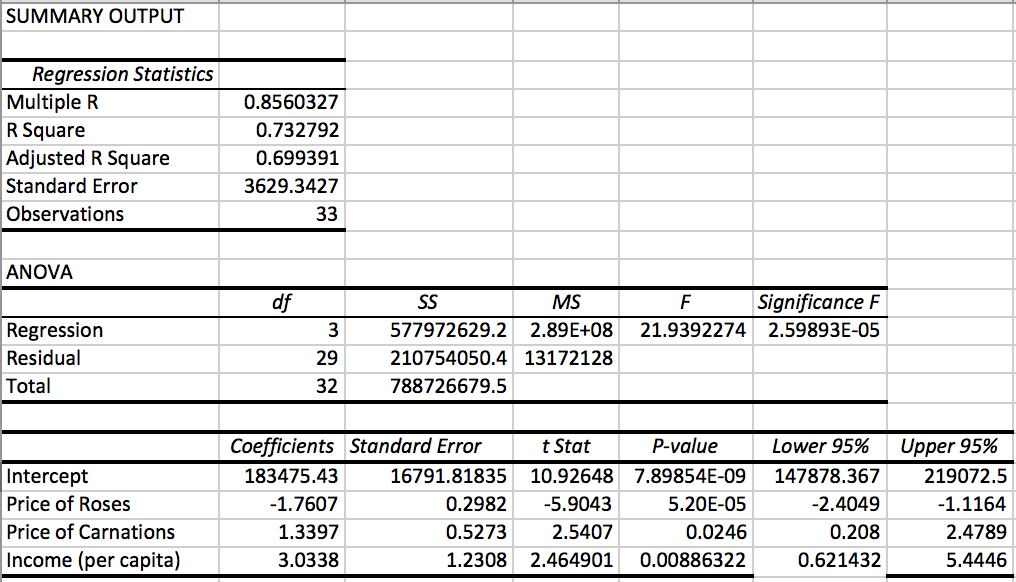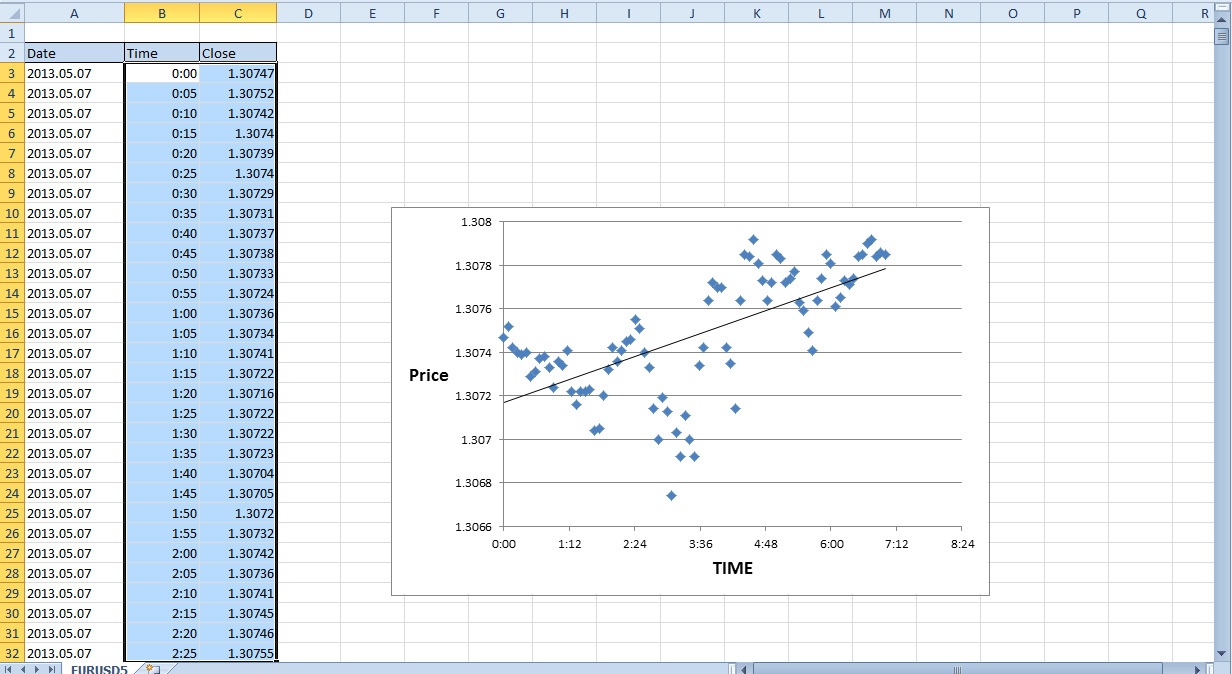
Using the linear equation (Equation on Chart in Figure 5), a spreadsheet cell can have an equation associated with it to do the calculation for us. We have been given the absorbance readings for two solutions of unknown concentration. The regression line can be considered an acceptable estimation of the true relationship between concentration and absorbance. The linear equation shown on the chart represents the relationship between Concentration (x) and Absorbance (y) for the compound in solution. Return to Top Using the Regression Equation to Calculate Concentrations The chart now displays the regression line (Figure 4) The linear trendline should automatically be selected - see below:Ĭhoose Display equation on chart option as well (Figure 2):Ĭlick OK to close the dialogue. You can add a regression line to the chart by right-clicking on a data point, and choose Add Trendline.Ī dialogue box appears (Figure 2). Return to Top Creating a Linear Regression Line (Trendline)

This module will start with the same scatter plot created in the basic graphing module. Traditionally, this would be a scatter plot. Creating an Initial Scatter Plotīefore you can create a regression line, a graph must be produced from the data. This is done by fitting a linear regression line to the collected data. This fact can be used to calculate the concentration of unknown solutions, given their absorption readings. Beer's Law states that there is a linear relationship between concentration of a colored compound in solution and the light absorption of the solution. The data below was first introduced in the basic graphing module and is from a chemistry lab investigating light absorption by solutions. This too can be calculated and displayed in the graph. The closer R^2 is to 1.00, the better the fit. How well this equation describes the data (the 'fit'), is expressed as a correlation coefficient, R^2 (R-squared). This equation can either be seen in a dialogue box and/or shown on your graph. In addition to visually depicting the trend in the data with a regression line, you can also calculate the equation of the regression line. That is, the theory underlying your lab should indicate whether the relationship of the independent and dependent variables should be linear or non-linear. It is important that you are able to defend your use of either a straight or curved regression line. A curved line represents a trend described by a higher order equation (e.g., y = 2x^2 + 5x - 8). There are no squared or cubed variables in this equation). A straight line depicts a linear trend in the data (i.e., the equation describing the line is of first order. Regression lines can be used as a way of visually depicting the relationship between the independent (x) and dependent (y) variables in the graph. Using the R-squared coefficient calculation to estimate fit.Using the regression equation to calculate slope and intercept.Creating a linear regression line (trendline).The Linear Regression Line for one of the bars has been super-imposed to show where it was at that time.Untitled Document Linear Regression in Excel-2007 Table of Contents The following chart shows the Linear Regression Curve. It is useful to plot the end value of the line and channels for each prior day and also view the slope value and slope change for each prior day. The linear regression line is redrawn every day which changes its slope and also changes the standard deviation channel width. LRPctAnnSlopeChg: This is the change in annualized slope value from the previous day.

LRPctAnnSlope: This is the forecast annualized % increase or decrease in the line end value In the above charts you can see 2 indicators in the lower area: EdgeRater has developed a value which is a forecast % of a 1 year period, meaning that if the line continued on for another year at the current slope rate it would be X% higher than it is today (or X% lower for negative slopes). It has the exact same slope value but the percentage increase is much lower.Ī more useful way to compare slopes among different stocks is to use a percentage value. For instance, compare the value of slope for a 20 day line which starts at 1000 and ends at 1010: The value of the slope indicates line direction and steepness, however it is not so useful for comparing the trend strength of different stocks due to being based on price rather than percentage. For instance if the 20 day linear regression line starts at a value of 100 and ends at a value of 110 the slope of the line is: A 21 day linear regression line with a 2 standard deviation channel Slope of the Linear Regression LineĪn interesting property of the line is the Slope which is the rise-over-run of the line.


 0 kommentar(er)
0 kommentar(er)
